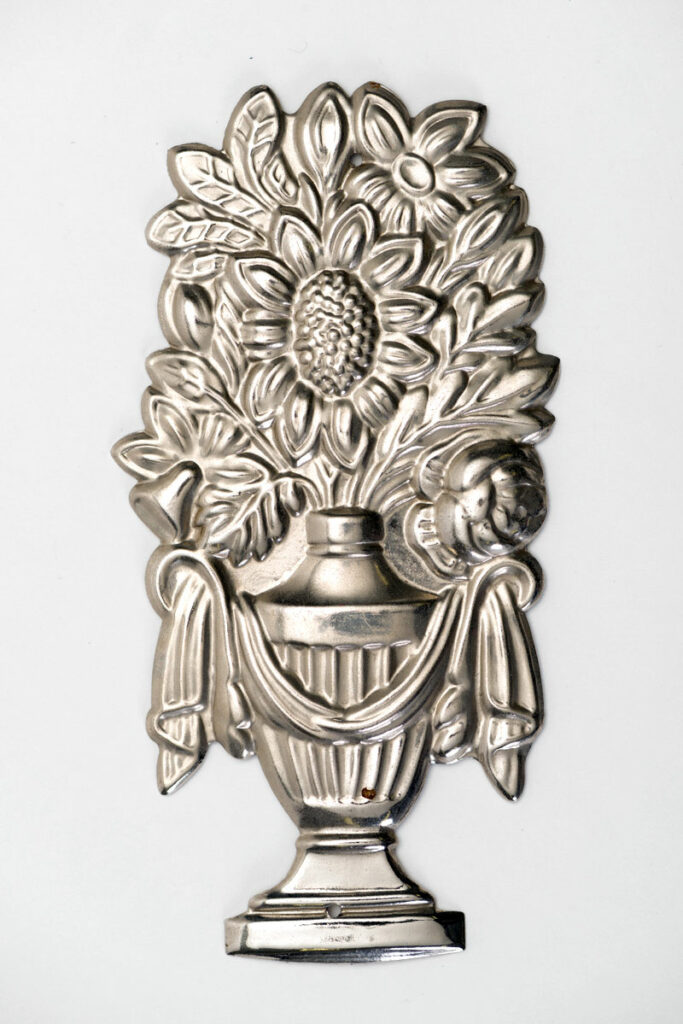
This ornament is ‘tin-dipped’.
Tin was one of the cheaper materials used at Newman Brothers. It is rococo in design. Rococo was a design style popular in the 1700s, developed by craftspeople and designers rather than architects. It is ornate, often asymmetrical in design and often features symbols of nature.
This ‘Flower Pot Lid’ motif is an ornament used to decorate coffins. Newman Brothers would have likely produced in the 1890s, when Rococo had been experiencing a revival. This design was popular from the 18th century through to the early 20th century. It is inspired by coffin furniture designs of the previous decades and was copied and reproduced, with minor tweaks, the design becoming common in non-registered designs.
The ‘Flower Pot’ and ‘Flower pot and Angel’ design was the trade’s nickname for this and similar motifs. The use of flowers and foliage are often symbolic of the brevity of life, and the cyclical and seasonal nature of life. Both are key elements in Rococo design. Dr. Julian Litten, expert of English coffin furniture says:
“An Urn from an “Urn and Glory” lid motif set, the “Glory” being a Crown of Life supported by two angels; the Urn was affixed at the foot end of the coffin, with the Glory at the head end. The design is mid-C18, die stamped, tin dipped and either left plain (as in this instance) or painted matt black. By the late C19/ early C20 they were still being produced, but limited to use on children’s coffins. They faded out altogether in the 1960s, which makes them one of the longest-lasting designs of coffin furniture.”







